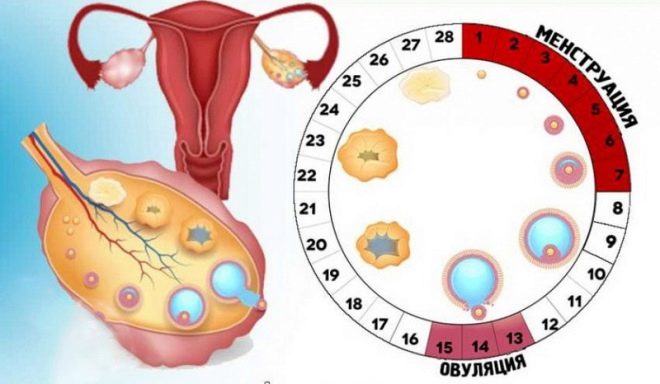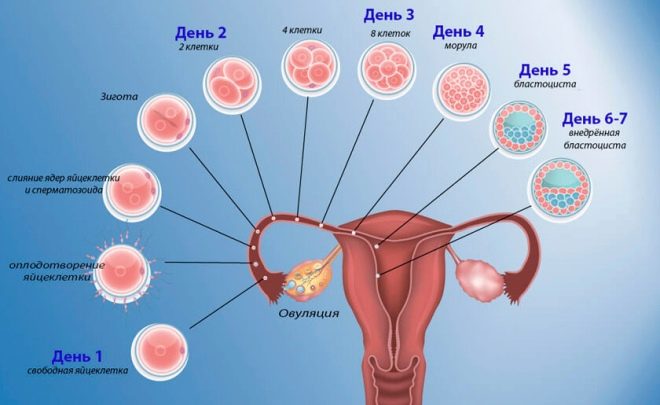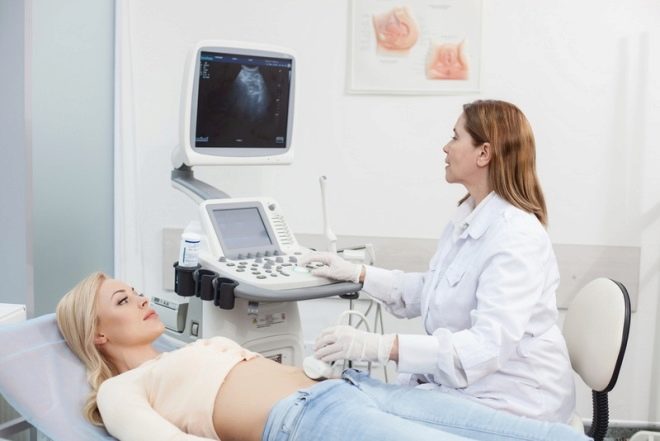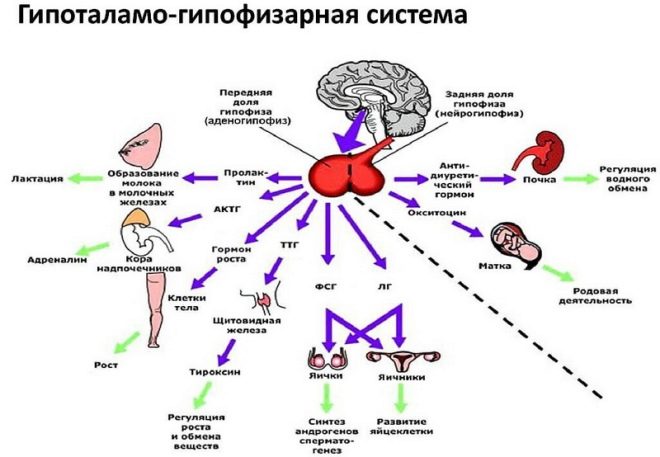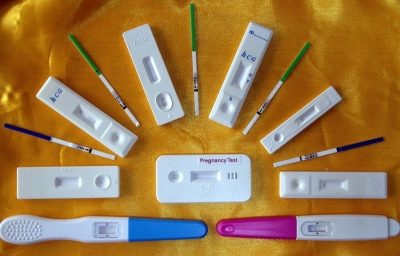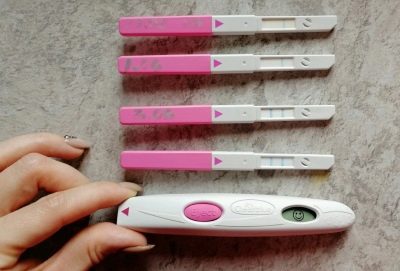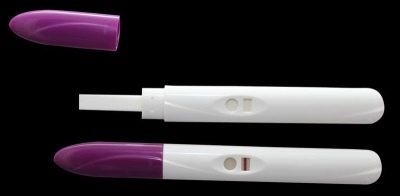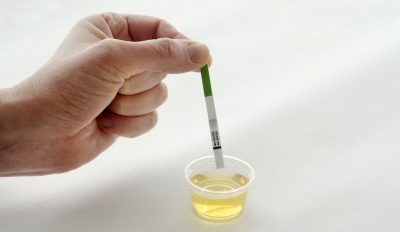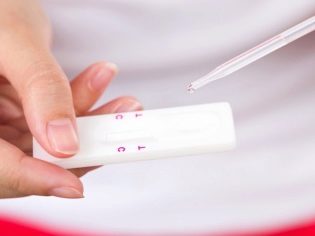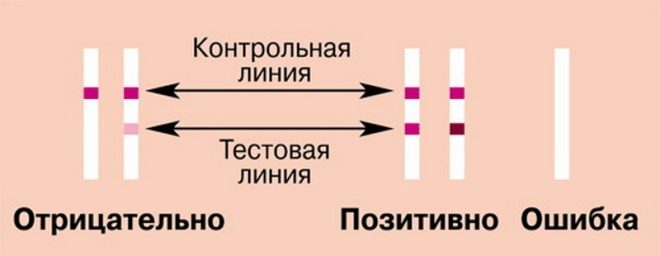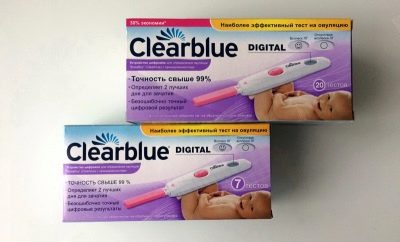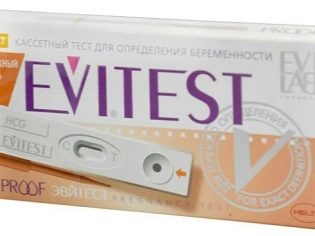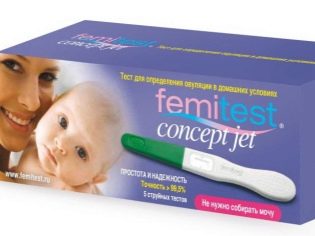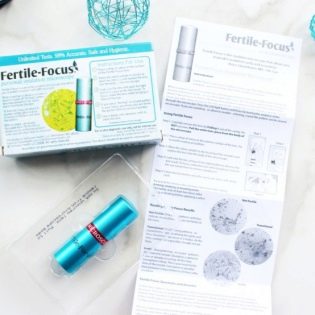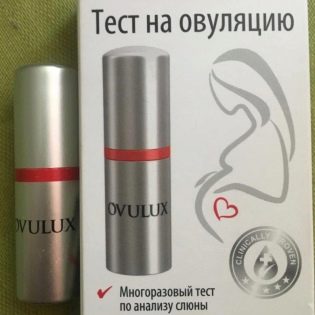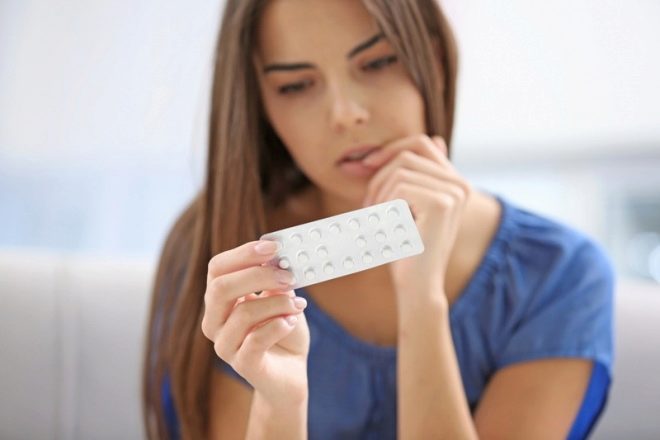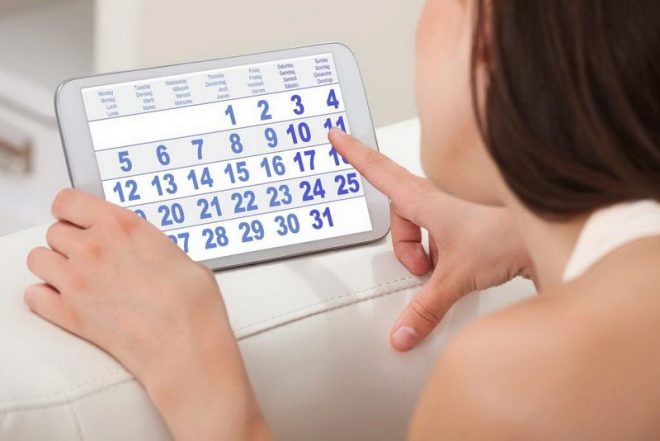Ovulation tests: from the principles of work to the instructions for use
Ovulation tests are a useful invention of mankind, which allows not only to effectively plan the conception of a child, but also to protect against unwanted pregnancy. If a man is able to conceive on any given day, then for a woman the period of fertility lasts only a short time — only a few days. Tests allow to determine this day with great accuracy.
What it is?
A woman can become pregnant only during the period of ovulation. For a woman, the fertile period is limited to days - that is how much the egg cell lives after ovulation. The test system, which is easy to use at home, is designed to determine the onset of this period.
Ovulation is the process of the release of a mature oocyte from the follicle, where the germ cell matured during the first half of the female cycle after menstruation, into the fallopian tube, where fertilization occurs after the ovum encounters live spermatozoa.
Before getting into the oviduct, within two weeks, the egg matures in the ovary, or rather, after menstruation, several follicles begin to mature, but in most cases only one is dominant under a certain hormonal effect - dominant or dominant. It is he who breaks on the day of ovulation and releases the oocyte (female reproductive cell), ready for fertilization.
In most cases, with a regular menstrual cycle, which lasts 28 days, ovulation occurs on day 14. But the female body is not a machine, not a mechanism, and fluctuations for several days are quite physiological and normal. It takes about an hour to leave the follicle, after which, for a day (maximum 36 hours), the egg cell ready for fertilization is located in the widest part of the oviduct awaiting sperm. If fertilization does not occur, the oocyte dies, is transported through the tube into the uterus and is taken out with the next menstrual bleeding.
Conception is possible if, during the period of the oocyte's release, live mobile spermatozoa are already present (sexual intercourse took place 1-3 days before ovulation), or male germ cells will arrive there within a day while the egg cell is alive.
There are many ways to determine ovulation. Some enjoy counting (calculate the middle of the cycle)But this method has large errors, because a woman cannot predict the fluctuation of the day of ovulation - much depends on her health, well-being, hormonal levels, the presence or absence of stress, and other factors.
Others focus on discharge and sensation. A couple of days before ovulation, the discharge becomes viscous, abundant, transparent, similar to raw chicken egg white. Some people say that they are able to feel ovulation due to minor pain on the right or left side (depending on which side the follicle on the ovaries has burst from). But to objectively feel ovulation, according to doctors, is not possible, and therefore this method does not hold water.
The temperature method, which is based on fixing the basal temperature, but it can also have significant errors.
It is most difficult for women with certain gynecological problems, because with an irregular menstrual cycle, with different durations of the last few cycles, it is very difficult to calculate the estimated day of ovulation.
In the clinic, you can determine ovulation using a fairly accurate method - based on the results of an ultrasound of the ovaries. It is also possible to make a laboratory analysis of blood for the quantitative content of luteinizing hormone (LH hormone) in the blood - just before ovulation, its concentration reaches its peak values. It is clear that at home a woman cannot afford such a diagnosis, and going to the clinic every day in the middle of the cycle for an ultrasound or for blood donation is rather troublesome. Therefore, a home test was invented that helped millions of women become pregnant.
The test helps you quickly and without hassle to understand whether ovulation is coming, whether it is or has already passed. And in accordance with these data, plan sexual acts for conceiving a baby or, on the contrary, in order to prevent unplanned pregnancy.
How does the principles of work
All women are familiar with pregnancy tests, which, thanks to a special zone of sensitivity to chorionic gonadotropic hormone (hCG), allow us to determine whether there is a presence of this substance produced by the chorion of the embryo in the ladies urine. The ovulation test works in the same way, but it does not respond to hCG (this is a pregnancy hormone), but to other hormones that regulate the ovulation process in the female body.
For the change of periods of the female cycle in the body of the fair sex is the hypothalamus, regulating the pituitary gland. The hypothalamus at the right time gives a clear command to the pituitary gland to produce these or other hormones, under the action of which the processes of maturation and release of the oocyte from the follicle will occur. If the egg does not mature, if it cannot leave the follicle, then conception will not occur in principle.
In the first half of the female cycle, the pituitary gland releases two hormones - FSH (follicle-stimulating, influencing the maturation of the sex cell) and LH (luteinizing, under the action of which the follicle breaks). FSH causes the follicle to grow until it reaches a critical size - up to 2 centimeters in diameter.
As the follicle grows in size, it stimulates the production of estrogen. Under their action, the pituitary gland begins to produce LH (luteinizing hormone) at an accelerated pace. This process in laboratory technicians and physicians is called the LH ovulatory peak. From the moment this peak is recorded, it takes from 36 to 48 hours to break the follicle and release the female reproductive cell ready for fertilization.
The ovulation test has a sensitivity zone (test zone) with a applied substance sensitive to the luteinizing hormone. Respectively, the higher the concentration of this substance in the body of the fair sex, the faster the sensitive zone will be able to determine this and show the woman whether ovulation is approaching or it has already occurred.
Even if you are sure that you know your body, that you have a regular cycle, there will be no more time to check the ovulatory period. If the day of ovulation is a mystery for you, then using a home test will help determine the period most favorable for conceiving a baby.
Types and characteristics
Ovulation tests are very diverse, and a woman who turns to a pharmacy with a relevant question may face a problem - which test is best to choose.Of course, this question has to be answered independently: for someone it is important that the test system is highly sensitive, for someone the question of cost is important and a cheap pharmacy test is needed. We will tell about types and we will give short characteristics.
Rapid tests in the form of strips (the so-called tests "strip") - very popular and, perhaps, the most demanded type of test systems for ovulation. These are paper strips with a reagent applied in the test sensitivity zone, which is stained when determining the high content of luteinizing hormone in the urine. The advantages of the test are that it is convenient to use, no special medical knowledge is required in order to understand its results. It is only important to follow the instructions.
Such tests are inexpensive, but they are difficult to call high-precision, because everything depends on the brightness of the second bar - the brighter it is, the higher the probability that ovulation occurs. Incorrect interpretation is not excluded.
- Tablet (cassette) test - looks like a plastic case with two miniature windows. The task of the woman being tested is to drop a few drops of urine into the first window with a special pipette and wait for the result to appear in the other. With two strips, the test will respond to the increased quantitative presence of the hormone LH in the fluid secreted by the kidneys.
The advantages of the system are that it is not necessary to specifically collect urine in a clean container, and also that the reliability of the result is slightly higher than that of a regular paper strip. The downside is that it costs more than express strips.
- Reusable test - an electronic device that can be used more than once. Equipped with interchangeable strips for determining LH in the urine, the accuracy is considered to be quite high. The cost is also not low.
- Inkjet test - a highly sensitive test system, which allows not to collect urine, but simply to substitute the test under the stream during the emptying of the bladder. A few minutes later the result appears on the test.
- Digital system - it is not even a test in the broad sense of the word, but a small microscope that looks like a tube of lipstick. Allows you to determine the approximation of ovulation saliva and vaginal discharge. Under the influence of estrogen, a woman’s saliva in the period immediately before ovulation on drying begins to resemble a drawing of a fern leaf or a frosty pattern on glass.
Vaginal secretory secretions behave similarly. Pros - quite high accuracy and reusability. Cons - the high price and large space for the flight of imagination of a woman, which sometimes allows you to see what is not, where it should not be.
In matters of choice, a woman should form her own opinion based on financial possibilities and the importance of high accuracy of the result.
Test Rules
If you use the test correctly, without violating the requirements of the instructions for use, you can get results that will be sufficiently accurate for planning conception. But precisely in the correct use lies the difficulty - many women make mistakes and get false results. To avoid this, you need to know how to properly do such testing.
The vast majority of one-time tests (the most common) have five test strips inside the box. Why five? Because it is possible to establish the fact of pregnancy by 1-2 stripes after a delay, but to guess the best time for testing for ovulation is not so easy, and repeated testing may be required. In addition, repeated procedures help to improve the accuracy of diagnostic self-study.
So, you bought the test and are thinking now when to start doing it.It makes no sense to conduct an independent study immediately after menstruation - we remember that luteinizing hormone appears before ovulation as the follicle grows, and therefore it is worth calculating the testing time, focusing on the duration of its cycle. Gynecologists recommend using the formula O = A-17, where O is the pre-ovulatory period and A is the cycle duration.
Example: for a woman, the menstrual cycle lasts 28 days. From 28 we subtract 17, it turns out 11. It means that the first test for ovulation makes sense to spend on the 11th day of the cycle. The countdown begins with the first day of menstruation. For example, a woman’s monthly period began on March 1. This means that the first test should be done on March 11.
What to do if the cycle is irregular? Here, the advice of specialists in the field of women's health is unambiguous: you need to find the average duration of the cycle, taking the last six months as a basis. Suppose a woman turns out that one cycle lasted 28 days, another - 30, the third - 29, the fourth - 32 days, and the fifth and sixth and all 34 days. We add these values and we get 187. We divide this number by 6 (months) and we get the duration of the average cycle for a particular lady - 31 days. Based on the method and formula described above, she needs to start doing tests on the 14th day from the start of the last menstruation (31-17 = 14).
Before first use, you should carefully read the instructions that come with the purchase. If the strips are selected, the urine is collected in dishes and dipped there test to the marked level for 15-20 seconds, then 5-10 minutes waiting for the result, putting the test on a dry napkin. Jet test just substitute a stream of urine during urination.
The following strip is recommended to use at the same time in which the first one was used. To increase the likelihood of an accurate outcome, it is important for a woman to remember that there are some rules that you want to follow.
- Four hours before the test, you should not drink water, tea, other liquids (so the concentration of LH in the urine will be more objective).
- Prior to testing, you should refrain from urinating for at least two hours.
- Time of day matters: in contrast to pregnancy tests, in which it is desirable to use urine collected in the morning after waking up, ovulation tests are best carried out not at this morning portion, because there will be more hormone in it, which can lead to a false positive result. It is best to conduct a test on the following portions of urine, at any time from 10 am to 8 pm.
Do not forget that the accuracy will be higher if you carry out the next test at the same time as the previous one. If the first strip was used at 11 am, then the second one should be used the next day at 11 am, as well as the third and the next.
Decoding results
Deciphering the results of an ovulation test is not difficult. A woman can get several results that can not be interpreted in two ways:
- negative;
- positive.
If, in principle, there is no second strip in the test zone or it is barely visible, the test should be regarded as negative - there is no luteinizing hormone in the required concentration in the body. This means that the pre-variation window has not yet arrived, the testing was carried out ahead of time, or the ovulation has already passed (the favorable moment is missed) - after it the test also shows the result with the “-” sign.
When the stripes are two, the test is considered positive. With this result, a woman should expect ovulation approximately within 12-48 hours. Note the brightness of the second bar - the brighter and clearer it is, the higher the level of LH, respectively, the closer the crucial moment. Usually, it takes about 24 hours from the time two distinct bright streaks appear before ovulation. Thus, the result of ovulation testing lasts for 1-2 days, then, if we continue testing, the results again become negative.
Sometimes women get a strange result, in which there is not a single strip on the dough, which means that the test system itself was unsuitable (expired, with broken requirements for storage and transportation). Also, such a result may be if the woman made gross errors in the procedure of self-diagnosis.
It is important to know: two strips on the ovulation test - a signal that unprotected sexual intercourse with the aim of conceiving a baby should be carried out for three days starting from the current one. But to prevent pregnancy, the method is not very suitable, because the viability of sperm is much higher than the similar ability to survive the female oocyte.
Erroneous results - what is it and why is it happening?
The accuracy of ovulation tests can be argued to infinity. Manufacturers say it is from 97 to 99%. Let us say at once that, in fact, it is not so high even in expensive electronic tests and reusable mini-microscope systems. In this regard, women often get false results, which can affect a variety of factors.
A false positive result is getting two strips with virtually no ovulation. This happens sometimes when using highly sensitive test systems that are able to detect even a slight excess of the level of luteinizing hormone. It is not necessary that ovulation in the current cycle will generally occur (in the life of any healthy lady there are anovulatory cycles), but a weak fluctuation of the hormonal background can be perceived by the test as a positive result. But conception does not occur.
A false positive result may be in the anovulatory cycle and the result after testing for the morning urine, in which LH may be present more.
A false negative result is a result in which the test shows one strip and ovulation occurs. This is possible with the wrong test, violation of the rules of testing.
Evaluation of results should be made in strict accordance with the instructions for use.
If you get a positive result, remember the insignificant, but still the probability of a false positive result and check the data of the test system using other diagnostic methods - visit the ultrasound scan for ultrasound scan of the ovaries. If you measure basal temperature, then monitor the thermometer.
Who testing is contraindicated?
Usually, ovulation tests are not recommended for women who are in vitro fertilization treatment or a course of treatment for infertility with hormonal drugs. Any drugs based on hormones change the natural hormones of a woman, and therefore self-diagnosis using home tests becomes uninformative or uninformative.
The influence of Duphaston and other means may lead to false, erroneous results. Therefore, women with polycystic ovaries, infertility in the IVF protocol when planning conception are recommended more accurate methods - a combination of ultrasound and laboratory blood tests for LH and FSH concentrations.
Overview of popular test systems
To compile this review, we studied the feedback from women and specialists in obstetrics and gynecology. It includes the most popular and popular systems that you can easily find in pharmacies. Before you choose something for yourself, you should learn more about some of them.
Clearblue - digital test system
Manufacturers indicate high accuracy test. The device looks pretty solid, consists of a plastic case and a testing module. According to the instructions, a module is inserted into the housing, after which a blinking signal should appear on the housing. This means that the system is ready for operation.
Urine should be collected in a clean dish, after paying attention to the hygiene of the external genital organs. The sampler is immersed in the urine for 10-15 seconds, while it is important not to wet the case itself. Then put the system on a flat, dry surface and after about 30-40 seconds the test will begin to blink, signaling that it is fully operational. After a couple of minutes, the result will be ready. An empty circle means that the time for conception is unfavorable.
A smiling smile in the test window is a positive result. The strip is thrown away. For the next use, insert a new one.
The cost of the test in pharmacies exceeds 700-800 rubles. According to reviews, the test is interesting precisely because of the absence of the second, and even the first stripes, women say that he “smiles” to them. There are a lot of good reviews, but there are also reviews of how the test has never smiled during the cycle, and the pregnancy still occurred.
"Frauteste"
This is a more economical and budget option. Manufacturers of test strips (strip tests of this brand) approach the matter quite responsibly, and therefore their products have proven themselves for a long time and reliably among women all over the world. Any of the Frautest kits contains 5 stripes. The cost of sets from 400 to 500 rubles. A nice bonus is two strips of the same brand, but to determine pregnancy from the first day of delay of the next menstruation (you do not have to separately buy later pregnancy tests!). And one more nice bonus is 7 small containers for urine (there is no need to look for suitable suitable dishes for its collection).
The use is simple and straightforward even on an intuitive level. The strip is immersed in a urine sample to the line marked on the strip. After five seconds, take out and place to dry on a dry surface. After 10 minutes you can read the result. It is standard: two bars - positive, one - negative. Each strip is intended for one use only.
If the pharmacy for some reason does not have a strip system of this particular manufacturer, without much damage to the result, you can replace it with the Eviplan, Ovuplan, Femplan strips.
According to reviews, the test is quite accurate, but for express strips the cost is somewhat overestimated. Some argue that the test may be wrong more often than digital.
Cassette tests
A huge plus of such tests is reusable use, and therefore they can be safely chosen by those who have been planning a pregnancy for a long time, have tried many one-time tests. This will save in the end. They are made simply - a cassette is inserted under a stream of urine and in 5-10 minutes you can read a result that looks like one or two strips.
The manufacturer does not matter much. Many tablet tests have almost identical characteristics, accuracy, and almost identical user reviews. Therefore, take any - "Frautest", "Eviteste", "Femitest" or "Ovuplan."
Electronic test to determine ovulation by saliva
This is a very accurate test, but it is considered the most expensive, and therefore less popular, in connection with which the real user feedback about it is not as much as I would like to lay down a clear idea of the pros and cons. Available for purchase brands such as "Femotest", a mini-microscope Fertile Focus, "Eva-testD", "OVU-test", MaybeMom and some other brands.
It is used simply: put a little saliva on the glass of the microscope, wait for it to dry out and carefully examine it with a microscope. If the picture resembles fern leaves, ovulation is very close. The device is reusable, cost from 2 to 4 thousand rubles.
The results of the body do not depend on the level of LH in the body - the test “works” on changes in saliva under the influence of estrogens, and therefore is suitable for women who have problems with hormonal background. Many models allow you to explore not only saliva, but also vaginal secretions.
Common Questions
Due to the fact that the use of ovulation tests entered the lives of women not so long ago, this raises a lot of questions, and not all of them can be given clear answers attached to the purchase instructions for use.Here are the most common ones.
How to estimate the probability of getting pregnant if there are two stripes on the test?
Many women mistakenly believe that the ovulation test is useless, because it did not help them to get pregnant. The test is intended to determine days favorable for conception, but it does not in any way evaluate the individual probability of conception. If you see two strips, there is no guarantee that the pregnancy will come. It depends on the health of the woman and her partner, on the mass of other factors that have nothing to do with ovulation themselves.
Thus, a test with a positive result shows that conception during this period is theoretically possible. And nothing more. The average probability of pregnancy in the ovulation period in women is from 7 to 32%, depending on age.
Considering the errors of the test systems, one should not ignore the fact that pregnancy can occur even with a negative test for ovulation.
Can oral contraceptives affect the results?
The question is very relevant for those who decided to conceive a child after a period of contraception using hormonal pills. Acceptance of contraceptives completed in the previous cycle. And then the whole question arises, whether the ovulation test in this cycle can determine the moment that is responsible and favorable for conception. Yes, it can. But provided that ovulation in general will take place.
The fact is that after the cancellation of the OK, the anovulatory period is quite acceptable for a woman, at which the cycle is established. This is especially true for women who have been drinking contraceptive drugs for a long time. That is why It is recommended to wait a couple of months between the end of contraception and the beginning of pregnancy planning. Usually two cycles are enough to restore ovulation.
If the tests are positive every month, and pregnancy does not occur - what is wrong?
The presence of a positive self-test for ovulation suggests that ovulation occurs. Why conception does not occur - another question. Either the couple does not have sexual intercourse on time, or the case of infertility of one of the partners or both. In any case, after a year of unsuccessful attempts, you should contact a gynecologist - a woman and a urologist-andrologist - a man to answer this question.
For women over 35, the period of passive waiting in the pregnancy planning regime should not exceed six months, after which you should consult a doctor for an examination for infertility.
In an infertile woman, ovulation can also occur, because the reasons for the absence of pregnancy are not always rooted in the ovaries and hormonal background.
All five bars showed a negative result - what to do next?
If none of the five strips showed a positive result, and at the same time, the woman usually has a fairly regular menstrual cycle, Then open the next pack of strips and continue testing for another 2-3 days.
Perhaps, ovulation is delayed due to some internal malfunctions (the woman had a cold, ARVI, was tired, under stress, had an air flight, change of time and climate zones). If subsequent attempts do not show a positive result, the cycle is likely to be anovulatory (within reasonable limits - 2-3 times a year - this is a normal phenomenon).
Is it necessary to use all the stripes from the purchased set?
If there are five strips in a pack, this does not mean that a woman should do all five tests. This may not be necessary. If 1-2 doughs showed bright stripes, there is no need to use the rest in this case, they can be put in a dry and cool place, so that you can use it later if necessary.
Review of tests for ovulation, see the following video.


